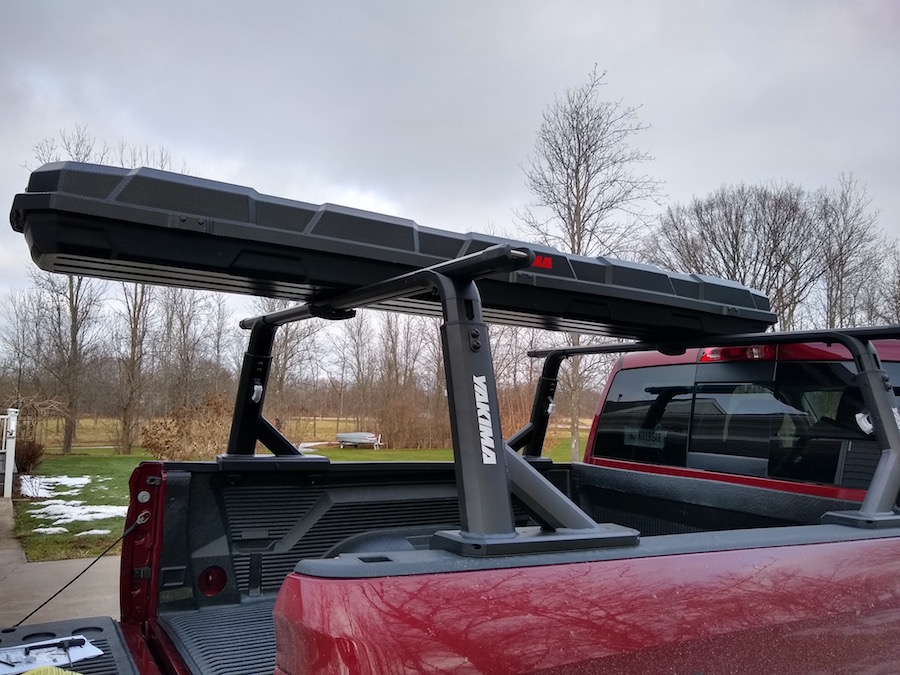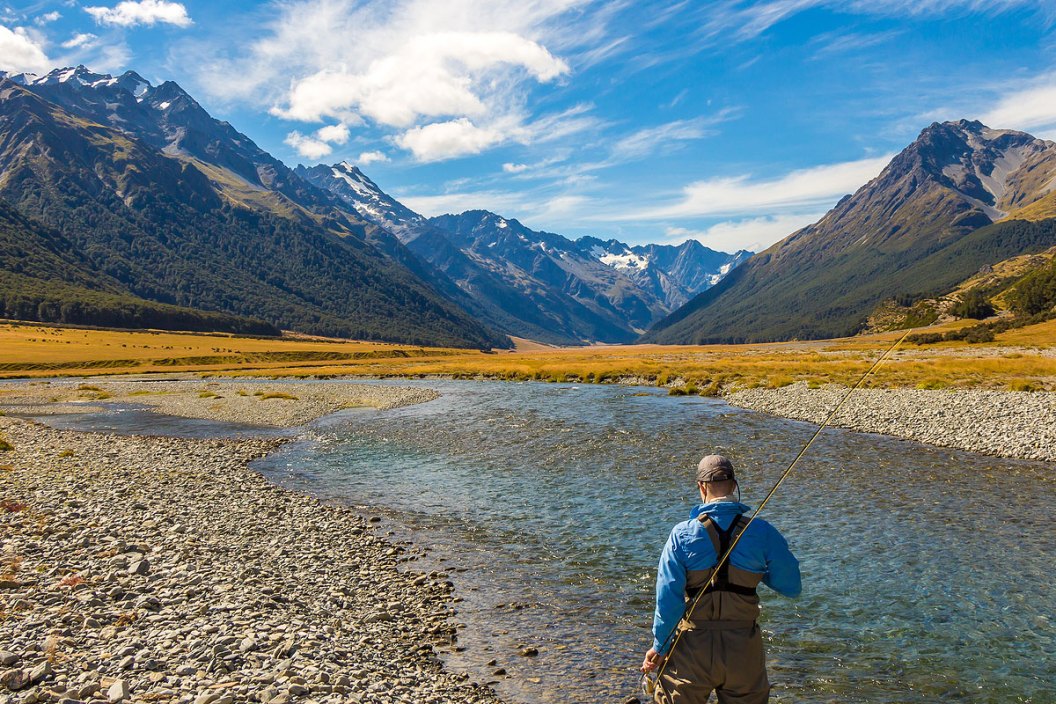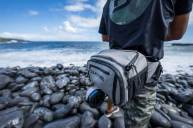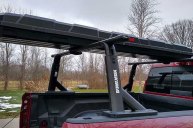Are you going to be traveling with fishing gear? Here's a list of things to think about.
Of all the things we pack for traveling, outdoor gear seems to bring up a lot of questions. And fishing gear in particular has some uncertainties, at least for some, involved.
Are fish hooks okay to bring along? What about fishing knives and nips? And where should you put it, your carry-on or checked baggage?
Well, there's one good place to start. What's the technical Transportation Security Administration word on the matter?
According to the TSA, "Fishing rods are permitted in carry-on and checked bags; however, passengers should check with the airline to confirm that the fishing rod fits within size limitations for carry-on items. Sharp fishing tackle that may be considered dangerous, such as large fish hooks, should be sheathed, securely wrapped, and packed in your checked bags. Like other high-value objects, you may wish to pack expensive reels or fragile tackle that does not pose a security threat (small flies) in your carry-on bags."
The bottom line is that nothing should stop you from planning a fishing trip, making flight arraignments, and confidently flying with any or all of your fishing gear across the nation or across the world to enjoy some amazing angling experiences. It's just a good idea to gather info first.
This is the moment in time when you really need to take stock of your gear. Really think hard about what you have to bring versus what you want to bring, and remember that the two aren't always interchangeable.
One big question that we'll try to answer will be the difference between taking an easily-stored pack rod that can be broken down into multiple pieces, and a one-piece rod that could be nine-feet long or more.
The questions are many and the answers should be simple, so hang in there angler of the airways, we'll fill you in.
Flying With Fishing Gear
Let's consider a fishing trip from the east coast to the west coast for some steelhead fishing for instance, just to start the conversation. We all have our favorite airlines and they all seem to have differing rules for nearly everything, so your first priority is to look to them. If you can't find answers in their online FAQs, try calling them up.
Your main question might be, "Can I carry on to a flight any fishing gear, such as a rod and reel combo?" They'll likely inquire about the size of your gear, so know this ahead of time. You should assume any full-length rods are a no-go as carry-ons, but multiple piece rods that can be broken down should be good.
Keep in mind, airlines differ and the overall guidelines can change quickly and without much notice amongst the general public.
Conveniently, United Airline's website lists quite reasonably what fishing equipment you may take on a flight, including size and weight info.
"You must properly encase all items in a suitable container. The container can't be greater than 115 linear inches (292 centimeters) (length + width + height) and 50 pounds... We won't accept fishing equipment greater than 80 inches (203 centimeters) in length as a checked bag on any itinerary involving a United Express flight."
It's safe to say that common sense tells us carrying certain fishing tools (like a knife, forceps, pliers, or lures laden with large hooks) won't be allowed as a carry-on item.
Many veteran traveling fishermen will tell you to pack your reels safely and then carry them on, since a fishing reel doesn't pose any threat on a flight (again, check with the airline). Carrying these things on helps prevent potential loss or damage to your revered gear.
One point to remember is that you will probably need to remove the line from the spool.
What about heavier equipment like surf casting or trolling rods? As stated, there may be a size restriction, but if it will break down into a hard-case rod tube you can check it as normal baggage.
Many airlines are fine with anglers who make and use their own DIY rod cases, you're just going to have to be sure that you trust your own engineering skills.
As far as packing and transporting your reels, it is a simple enough process to pack them with care by either using foam, bubble wrap, or some parts of your clothing to wrap them in, but remember that when you check the bag that they're packed in, it's out of your power to keep them safe.
Transporting Fishing Gear By Car

Craig Raleigh
There are many good choices of rod holders for different motor vehicles including rooftop racks for trucks, cars, and SUVs. There are also adjustable straps that fit up inside the roof and along the back of the seats that hold multiple rods and reels. For drivers of pickup trucks and SUVs you will have more room, especially those that own an extended cab.
If you have a pickup with a covered bed, all the better, but it can still be a daunting task to lay your fishing gear inside without worrying about what will happen to it. Probably the best approach is to place it on top of everything and anything else, and put it inside of a rod case if you can. This goes the same for packed reels and tackle boxes or bags.
This is especially true for using the inside of a car or SUV. Without a rod hanger you can still safely place your gear in last so that nothing has its weight on top of it, you'll just have to plan for it ahead of time. Obviously a hard case rod tube is the best option for your rods, and packing your reels tightly in a hard shell is an even better idea.
Highly rated companies like Yakima offer some of the best quality rod carriers for those who have a lot of rods and reels, along with other gear, that are willing to pay a little more to keep all of those memories safe and sound when out on the road.
Here's everything that the Yakima TopWater can hold and how to install it on a standard 1500 pickup truck. And if you're just looking to take good care of your collection, there are many good choices right here.
Further Thoughts
Since there are so many great fly fishing destinations that can be traveled to, having a fishing rod case for these, or a simple travel rod is a great way to keep one safe and have it with you when you want it the most. These can often be carry-on luggage and taken right on the plane with you.
Anytime that you deal with airport security, the best choice is always honesty. Gear like fishing hooks (even small, seemingly harmless hooks) will most likely be identified by a metal detector or by x-ray and may be taken away if the TSA considers them unsafe. It's worth pointing out that this can include fishing line as well. It's not common, but it has happened.
Make it a point to pack these things in your checked baggage as long as the weight limit isn't in risk of being overtaken. If you're bringing some chest waders, consider the lightweight models that most companies offer. Although you may need to also bring wading boots, they are easier to pack than a pair of waders that are made with boot feet attached.
Overhead compartments have only so much room, and heaven knows that you will need some fishing clothes as well. But it is generally not much hassle to carry on travel rods, especially when you've done your homework ahead of time.
Looking for a little more or even hot lunch for your hunting blind? Follow my webpage, or on Facebook and YouTube.
NEXT: 12 INNOVATIVE NEW FISHING LURES WE'RE EXCITED ABOUT
WATCH





